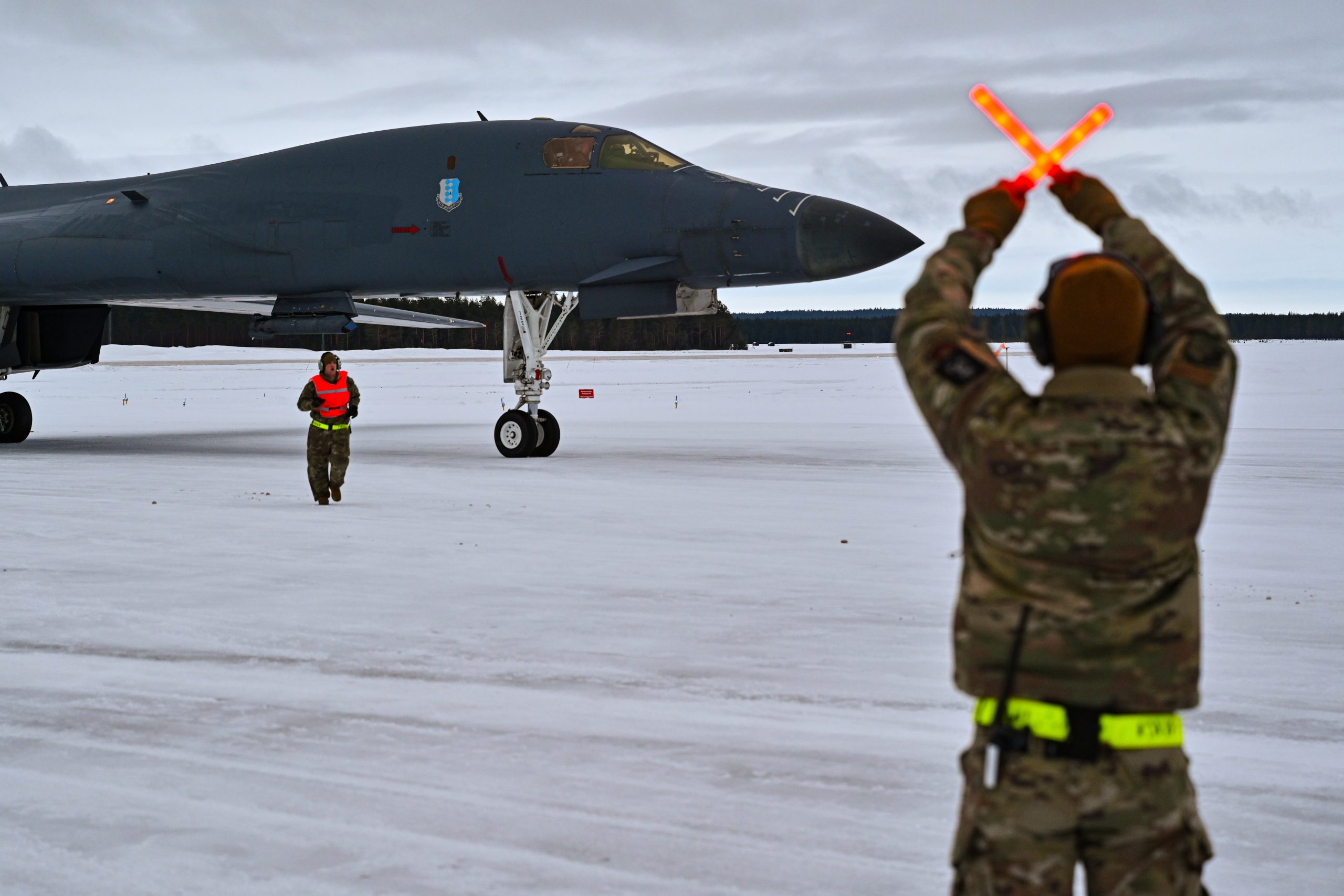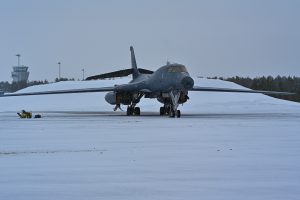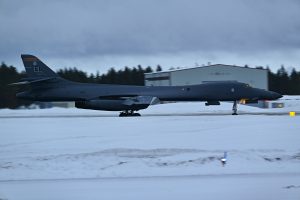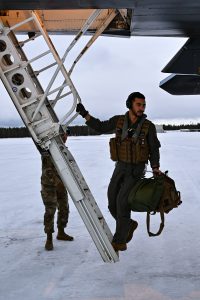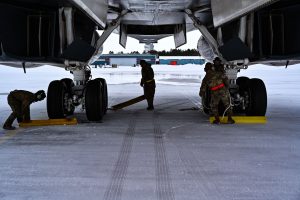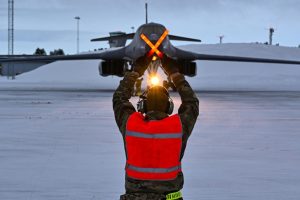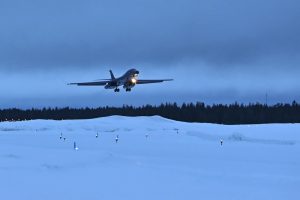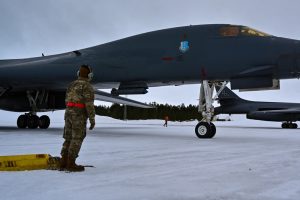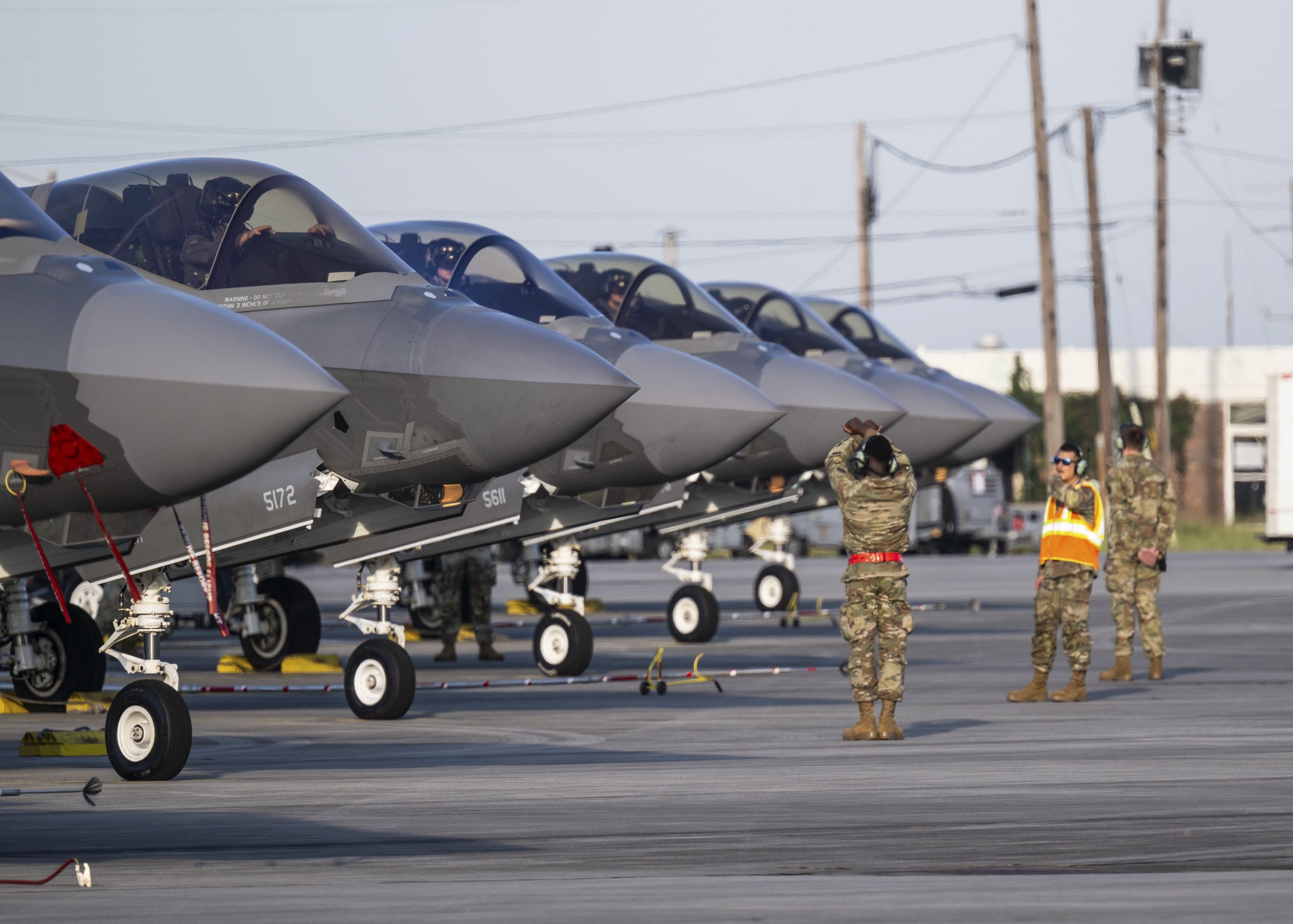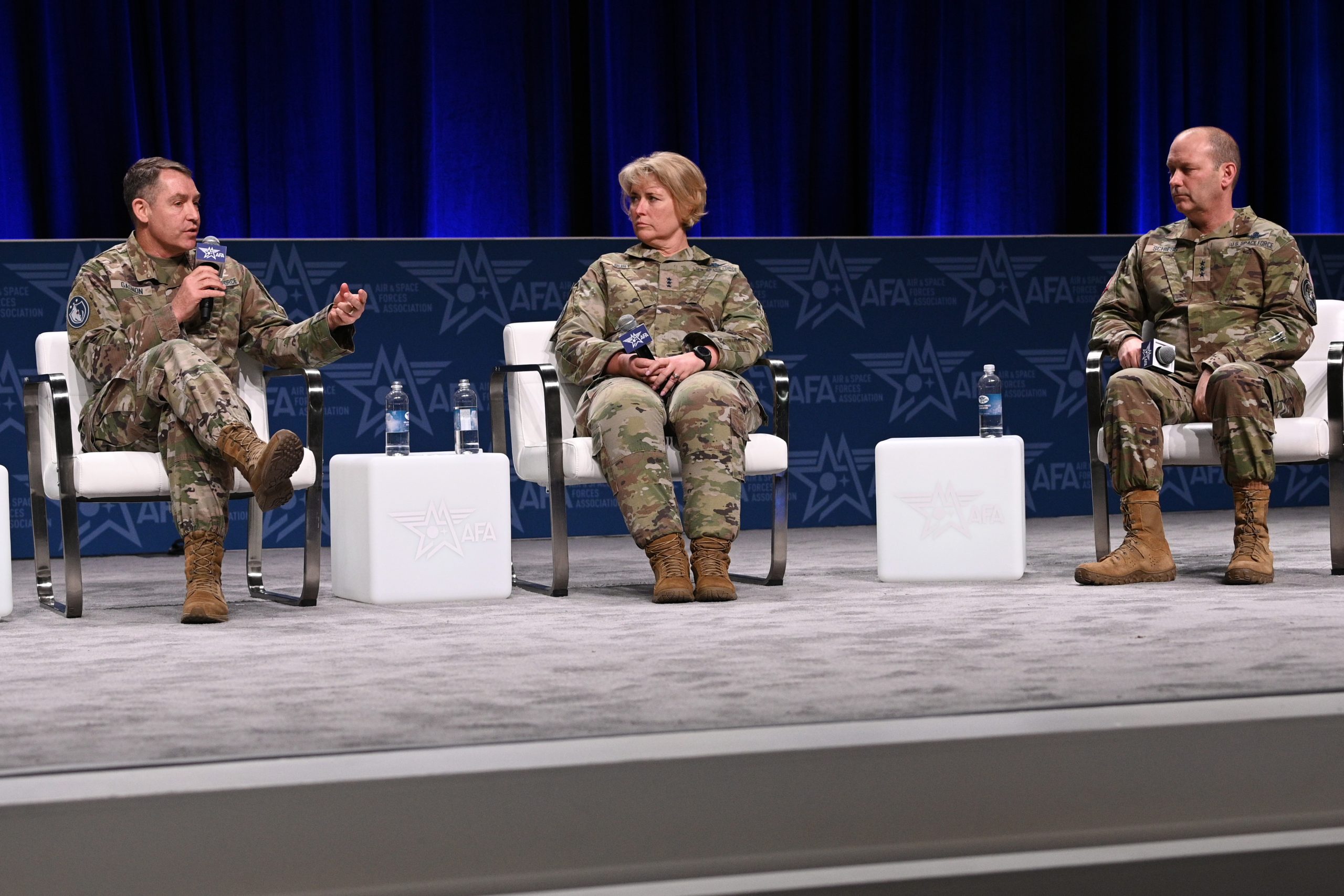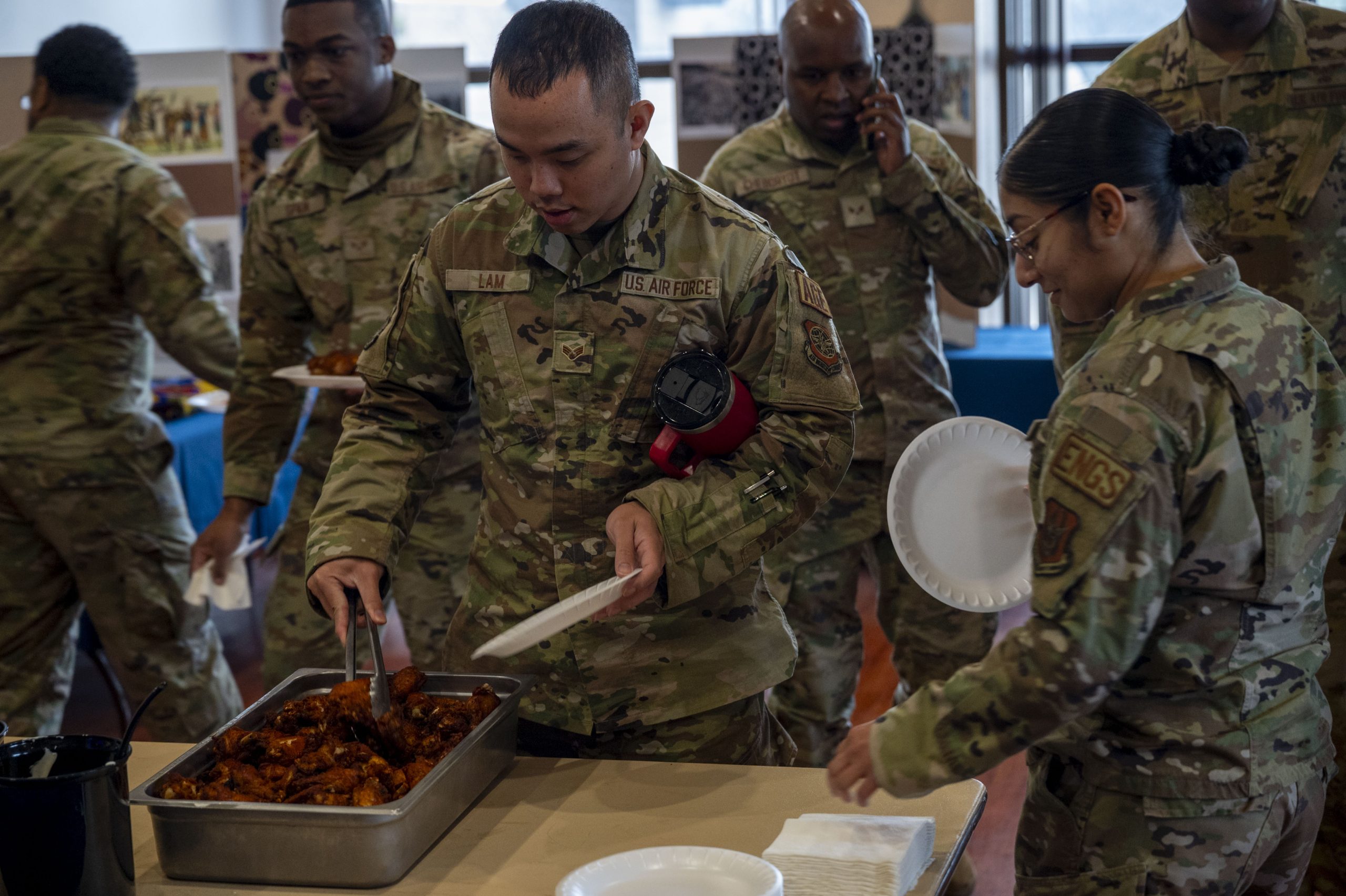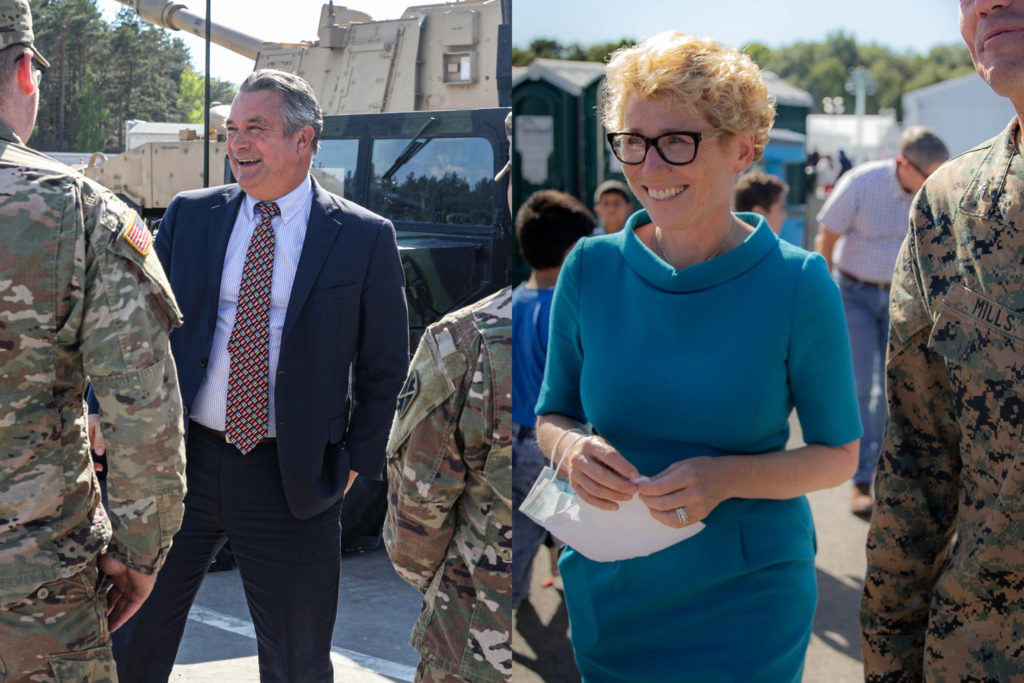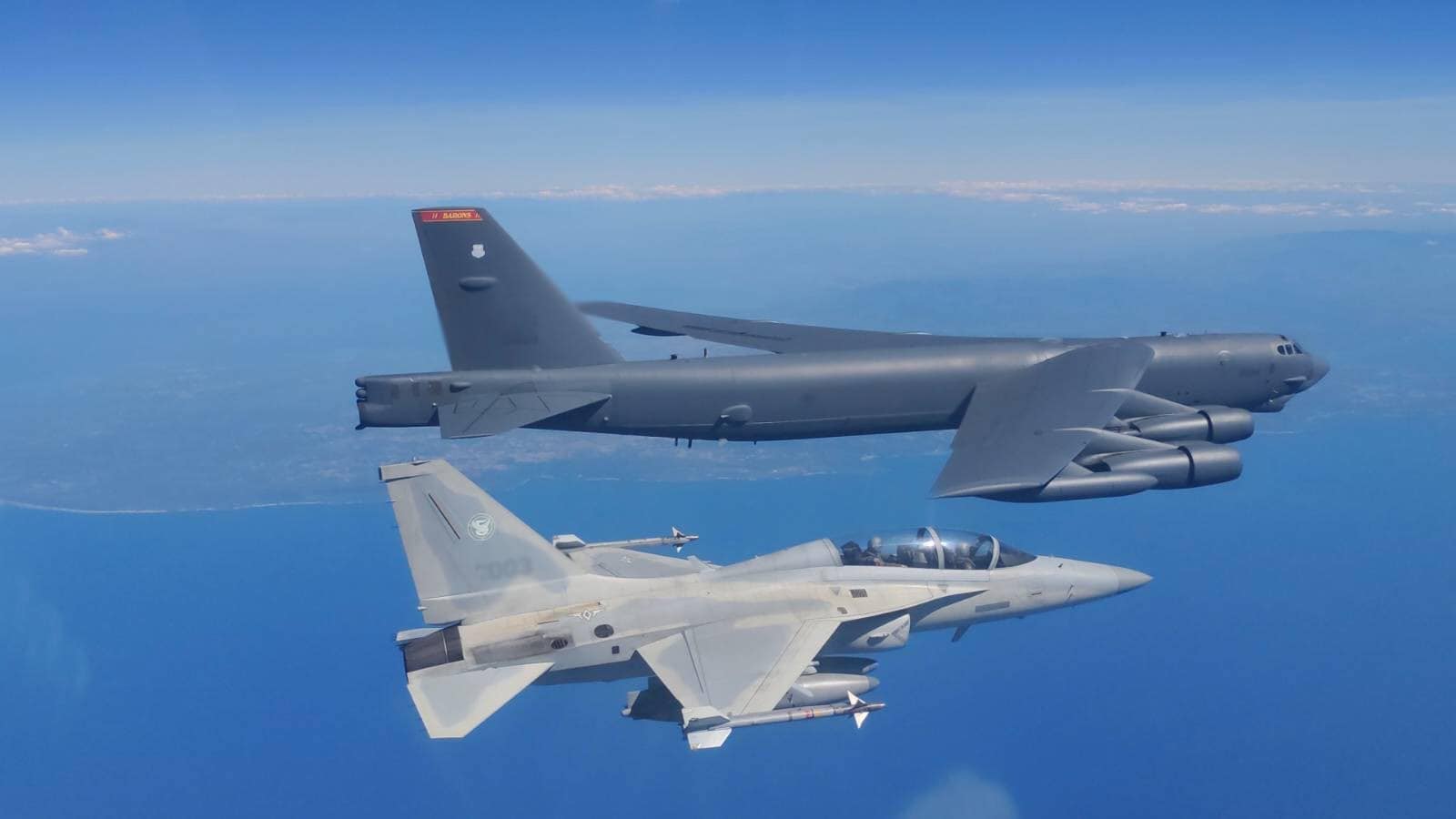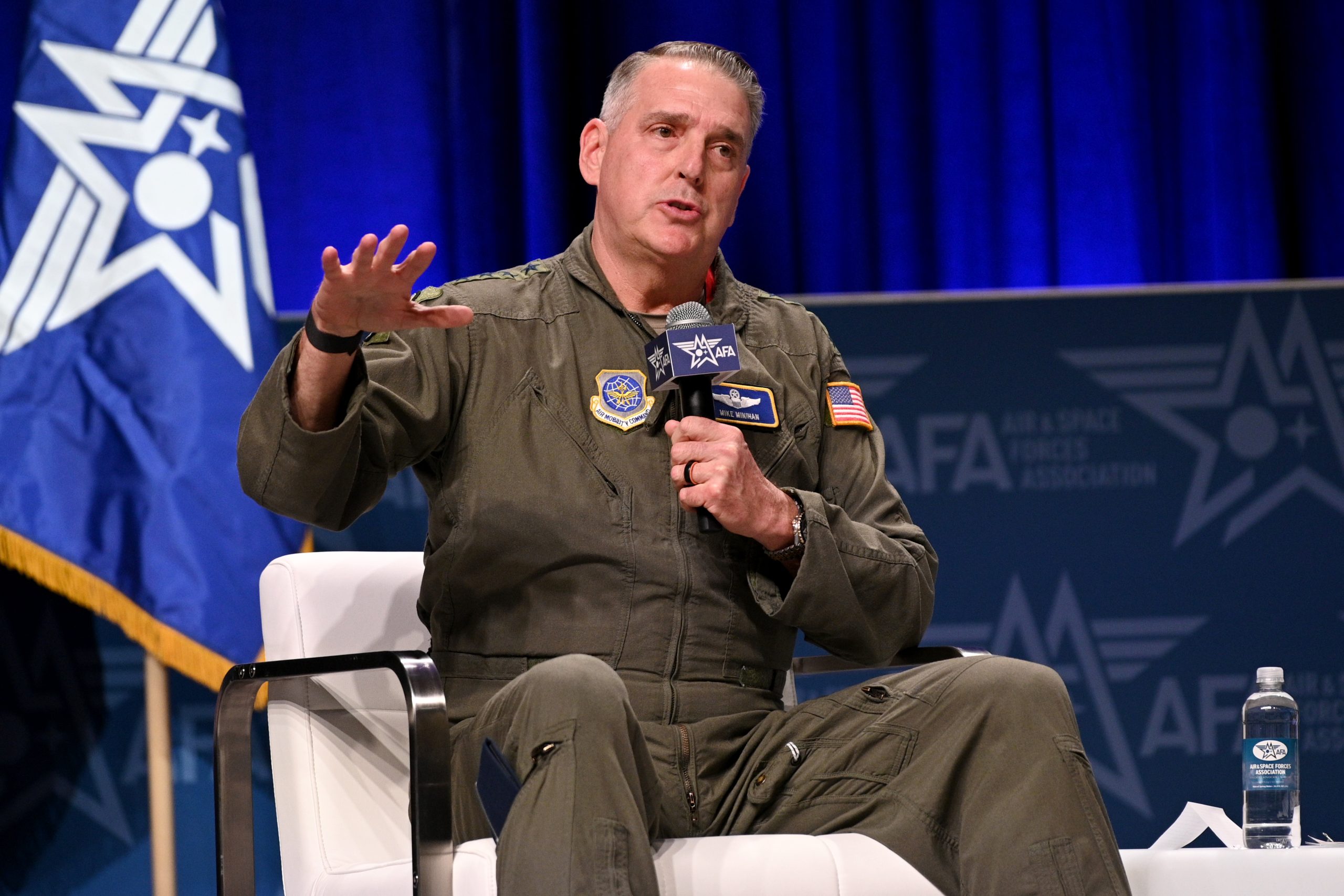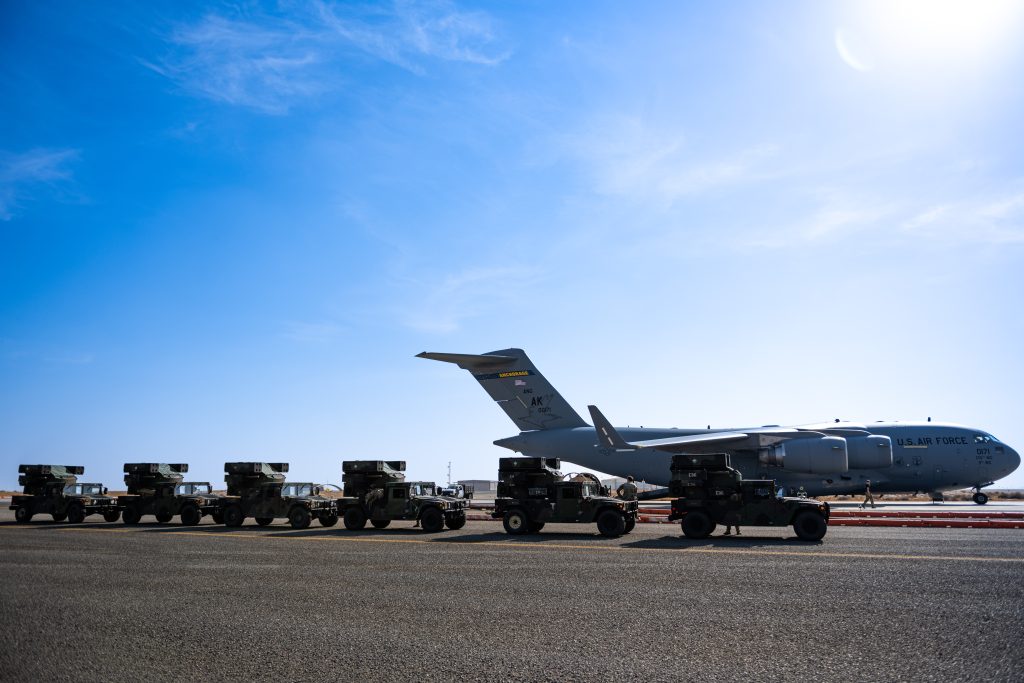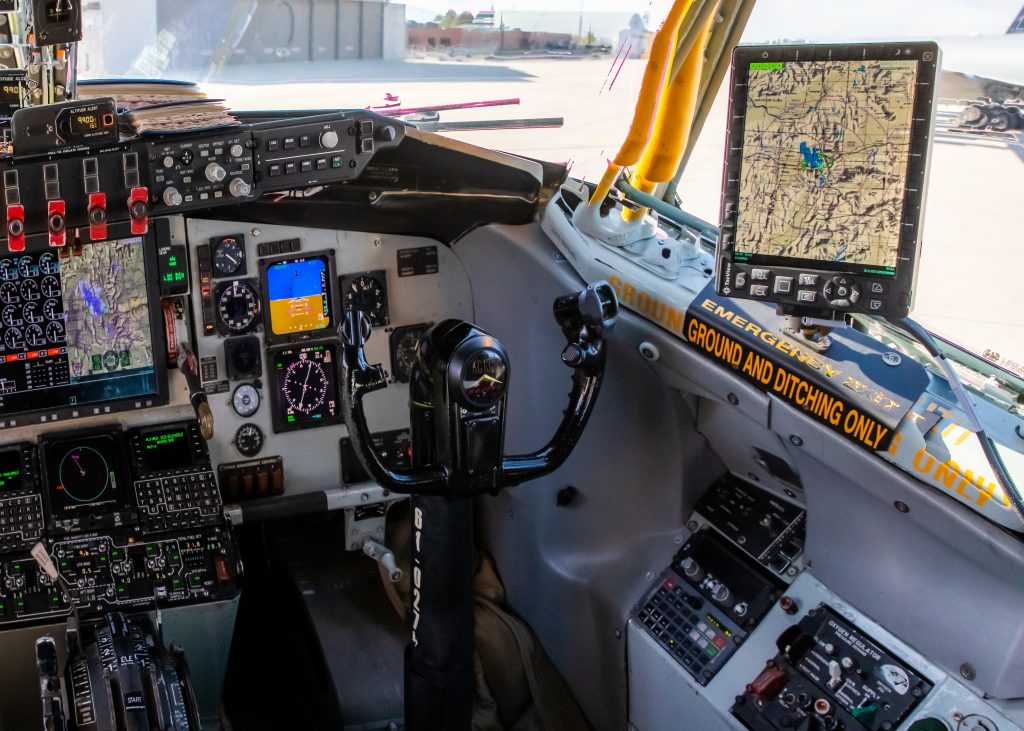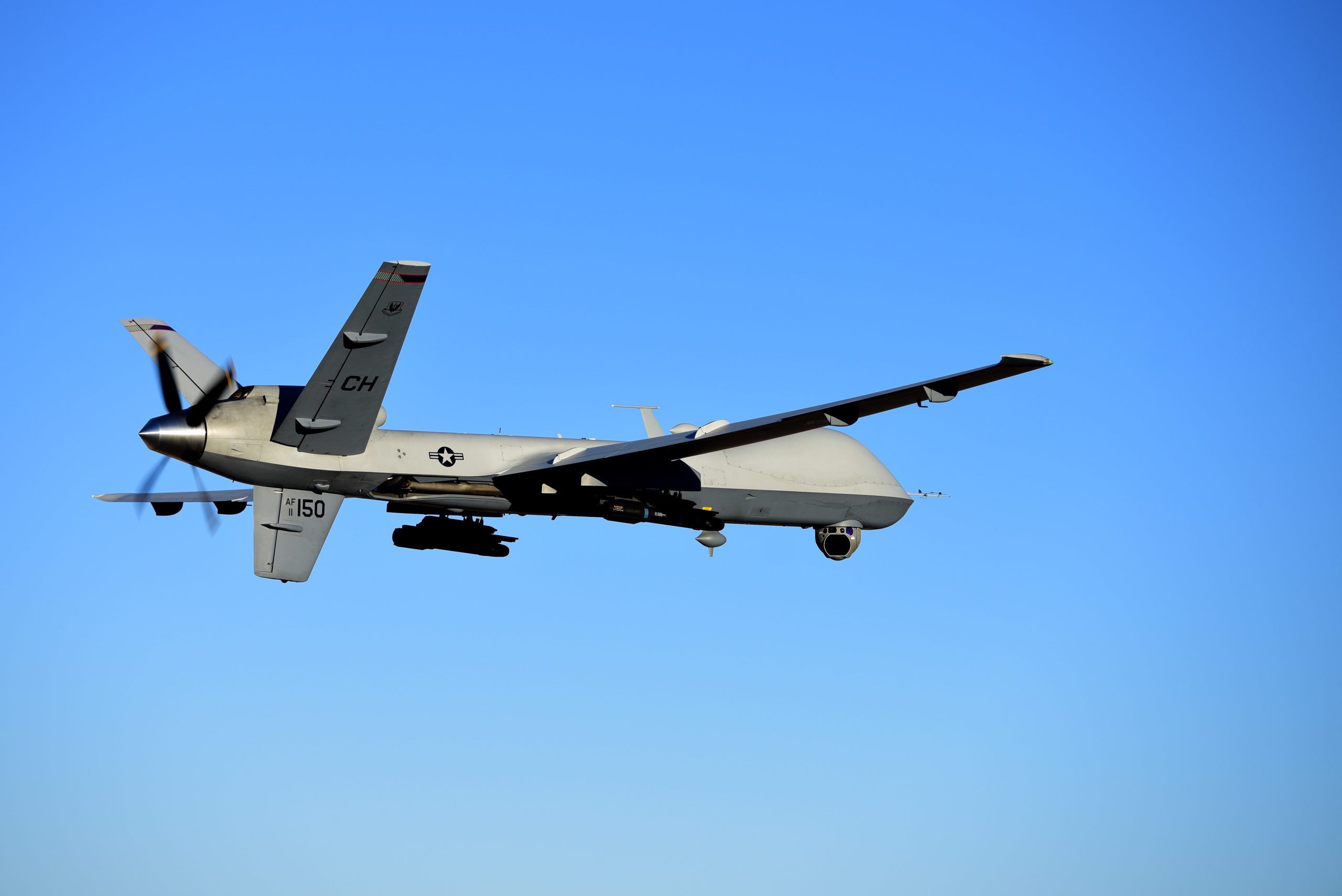A pair of B-1 Lancers flew from Ellsworth Air Force Base, S.D., to Luleå-Kallax Air Base, Sweden, to start a Bomber Task Force deployment on Feb. 23, marking the latest stop in the Air Force’s effort to showcase the reach of U.S. airpower and strengthen ties with allies and partners.
The missions provide “strategic predictability and assurance for Allies and partners while contributing to deterrence by introducing greater operational unpredictability for potential adversaries,” U.S. Air Forces in Europe-Air Forces Africa wrote in a press release.
“During the deployment, the bomber crews and support personnel will integrate with the Swedish Armed Forces, NATO Allies and other international partners to synchronize capabilities and assure security commitments across the U.S. European Command area of responsibility,” the release added.
Ellsworth’s B-1s have had a busy month. On Jan. 25, several bombers relocated to Dyess Air Force Base, Texas, to continue training and operations while the wreck of a B-1 that crashed was investigated. Then on Feb. 2, some of those B-1s dropped more than 125 precision-guided munitions on Iranian-aligned groups in Iraq and Syria in a nonstop trip from Texas to the Middle East and back. The strikes were in response to the Jan. 28 drone attack on Tower 22, a U.S. outpost in northeast Jordan near the border with Syria. Three U.S. Army reservists were killed and at least 47 other troops injured.
The B-1s returned to Ellsworth a few days later when the base’s runway reopened.
This latest movement to Sweden marks the second time ever U.S. bombers have landed in that country—the first occasion took place in June 2023, when B-1s from Dyess also landed at Luleå-Kallax Air Base.
In January, Lancers from Dyess Air Force Base, Texas, deployed to Singapore for joint exercises with the Republic of Singapore Air Force and the Japan Air Self-Defense Force. Last year, B-1s, B-52s, or B-2 bombers made appearances in the Middle East, the United Kingdom, South Korea, Iceland, and other locations around the world.
“It seems as though everyone likes to have a bomber in their region,” U.S. Strategic Command boss Gen. Anthony J. Cotton told reporters in August. “It shows our resolve in showing that extended deterrence is alive and well when it comes to the United States.”
The B-1 in particular has a history of speedy globe-trotting. In 1995, two Lancers from Dyess set a world speed record for circumnavigating the globe without stopping in 36 hours and 13 minutes. Along the way, the jets aerial refueled six times and dropped bombs on training ranges in three continents: Europe, Asia, and North America. Then-Lt. Col. Douglas Raaberg—now a retired major general and the executive vice president of the Air & Space Forces Association—commanded the four B-1s involved, and piloted one of the two aircraft that pulled off the exercise, which was called ‘Coronet Bat.’
